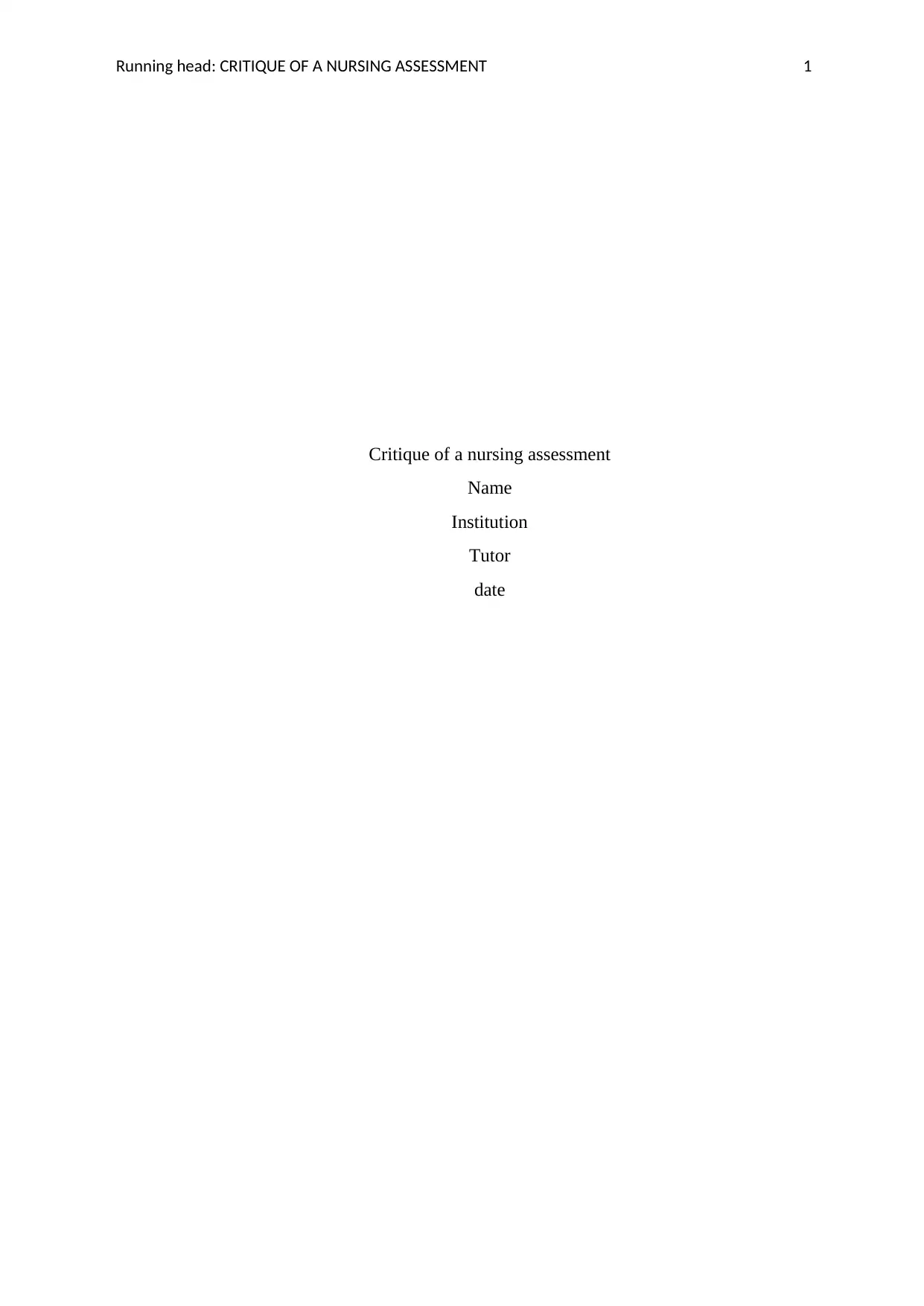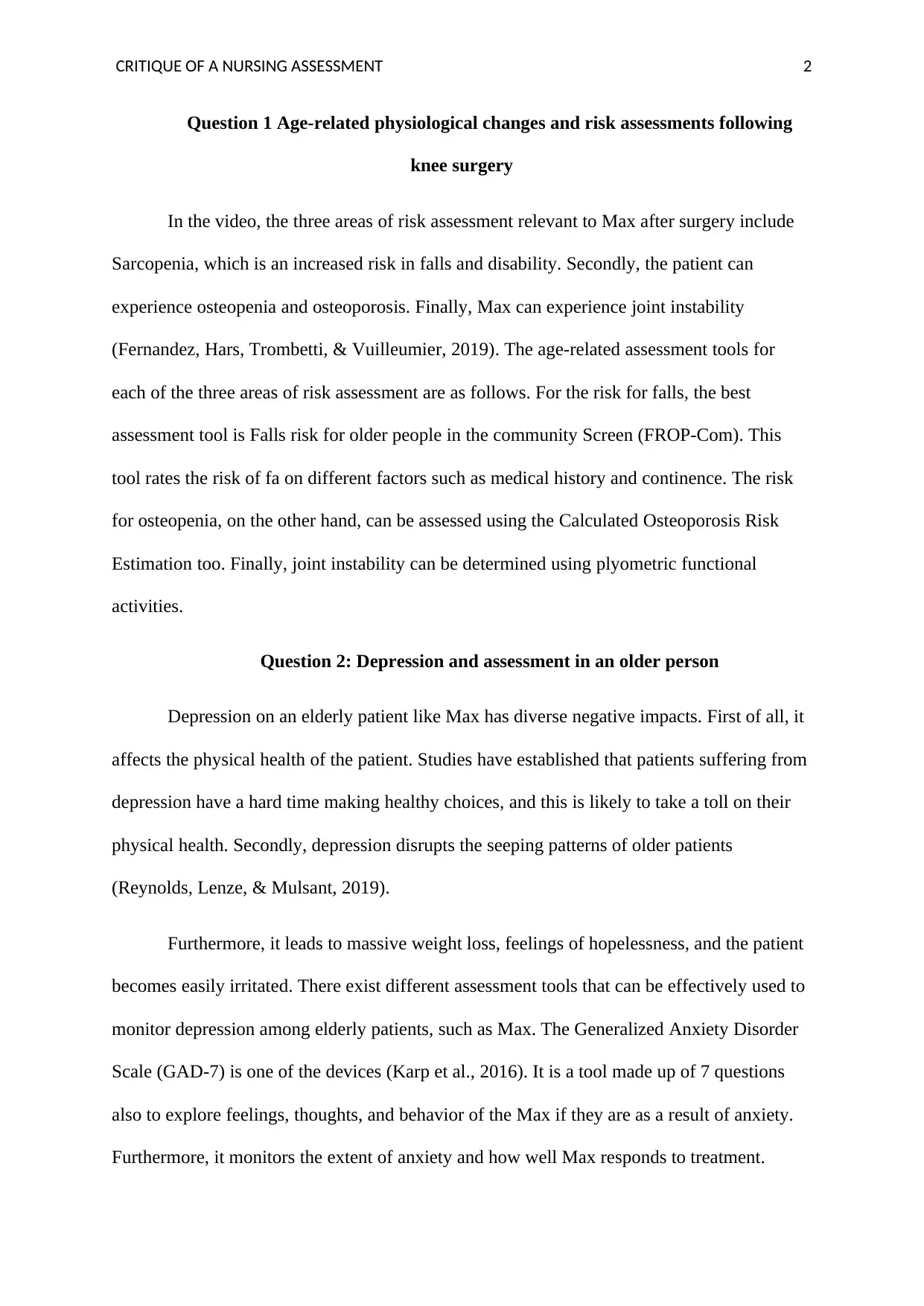NRS221 - Critique of a Nursing Assessment: Assessment 2 Report
VerifiedAdded on 2022/08/26
|3
|550
|20
Report
AI Summary
This report critically examines a nursing assessment, focusing on a patient's experience following knee surgery and his depression. It identifies three key areas of risk assessment related to age-related physiological changes: sarcopenia (fall risk), osteopenia/osteoporosis, and joint instability. The report discusses relevant assessment tools for each risk, such as the FROP-Com for fall risk, the Calculated Osteoporosis Risk Estimation tool, and plyometric functional activities for joint instability. Furthermore, the report explores the impact of depression on elderly patients, discussing its effects on physical health, sleep, and emotional well-being. It highlights assessment tools like the GAD-7 and PHQ-9 for monitoring depression and anxiety levels, and the effectiveness of treatment. Finally, the report discusses the principles of a strengths-based assessment (SBN), emphasizing collaboration, patient empowerment, and person-centered care as demonstrated in the video provided.
1 out of 3






![[object Object]](/_next/static/media/star-bottom.7253800d.svg)